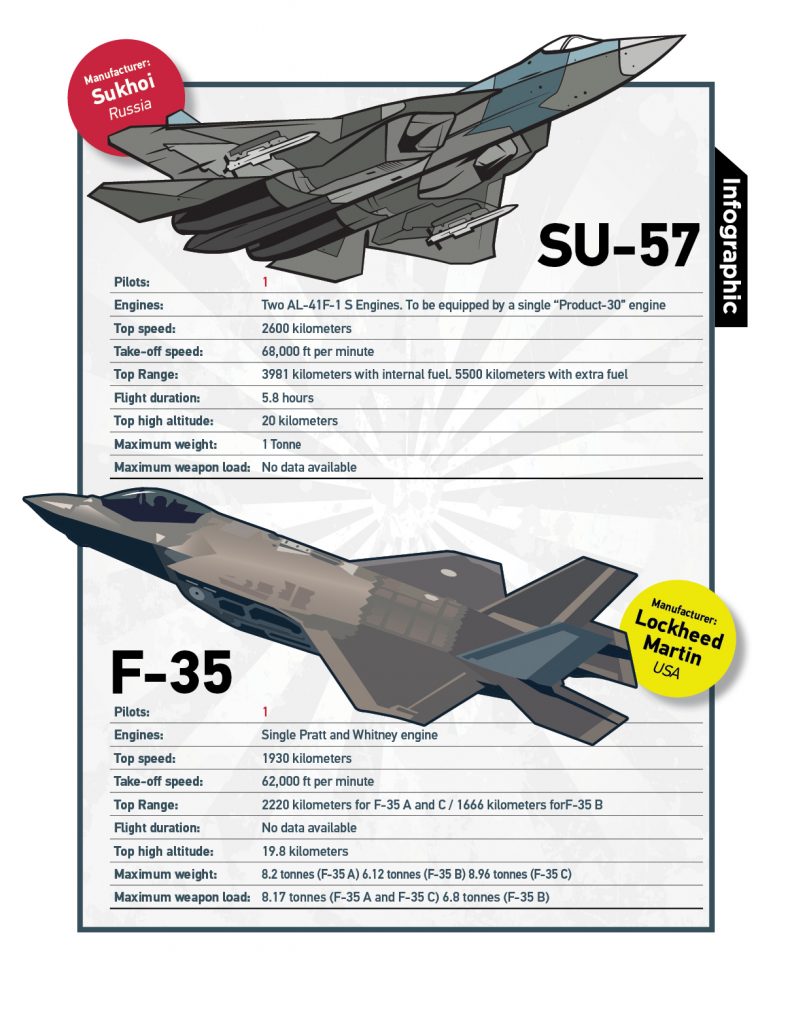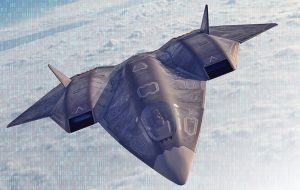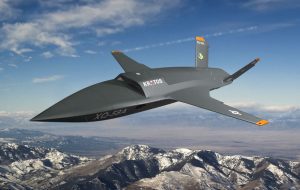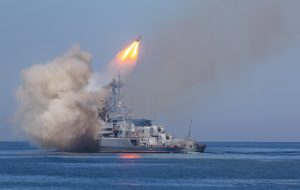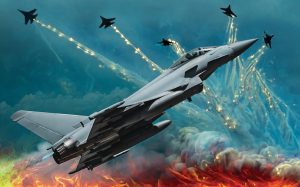Fifth generation fighter jets are one of the most advanced types of combat aircrafts. While the US has made headway in manufacturing this sort of jets, other countries, such as Russia and China, are steadily developing capabilities to produce similar airplanes. This paper offers an insight into the different generations of combat aircrafts and their distinctive features with a focus on the main types of fifth generation fighter jets, particularly the US-built F-35, Russia’s Su-57 and China’s J-31. It also highlights the main attempts to develop air defence systems against this mighty aircrafts and examines the next step towards building sixth generation fighter jets.
I- Jet fighter generations
Jet fighter generations are used as categories to distinguish major leaps in the manufacturing of combat aircrafts since their first use until now. The time span between research and design of a new fighter aircraft and mass production can last from few years to several decades.
The first generation of jet fighters (1945-1953) appeared following World War II marking the substitution of propeller aeroengines with jet engines which enabled higher maneuverability, altitude and speed. At the beginning, these aircrafts armament was limited to machine guns and light bombs and were deprived of radars and interceptor systems. Key first generation combat aircrafts include Russia’s Mig-15 and Mig-17 and the US F-86.
The second generation of fighter jets (1953-1960) were the first to break the sound barrier and maintain twice the speed of sound. The new airplanes, built with stronger metals, were equipped with radars and interceptors and armed with air-to-air rockets and guided missiles. Main types of this generation include France’s Mirage III, Russia’s Mig-19 and Mig-21, and the US F-104, F-106 and F-108.
The third generation (1960-1970) marked the start of multirole combat jets. This type was characterized by technological breakthrough in engine design giving the aircraft greater maneuverability. This generation was also the first to be equipped with electronic navigation systems. Famous types include Russia’s Mig-23, Mig-25, and Su-22 and the US F-4 and F-5 Phantom.
The fourth generation (1970-1990) marked major leaps in manufacturing multirole aircrafts with advanced avionics and integrated armament with the introduction of computer systems to give weapons unprecedented efficiency. The design concept was improved to give the aircrafts better maneuverability. These fighter jets include the US F-14, F-15, F-16 and F-18 as well as Russia’s Mig-29, Mig-31 and Su-27.
Major leaps in the enhancement of capabilities between (1990 – 2000) gave rise to what came to be called 4.5 combat aircraft generation. These built on fourth generation aircrafts with the introduction of upgrades in terms of design and performance as well as the incorporation of advanced weaponry such as long range air-to-air missiles and advanced navigation systems, in addition to electronic systems in the cockpit. It also marked the beginning of stealth technology and aircraft camouflage to radars and infrared detection sensors. This type includes the French Rafale, European Eurofighter, the US F-18 and Russia’s Su-35 and Mig-35.
II- The fifth generation of fighters
Ideas for the development of fifth generation fighter jets emerged in the mid 1990s. Efforts have been undertaken since then to produce these mighty aircrafts. The distinctive feature of this generation is having an all-aspect stealth even when armed thanks in part to the use of composite material and its design. These multirole aircrafts are equipped with state-of-the-art systems and tools that enable the pilot to have a comprehensive view and high speed performance in combat. Fifth generation aircrafts have highly integrated computer systems capable of networking with other elements within the battlespace for situation awareness and instant information exchange to ensure full control in the air. Some of the key aircrafts of this generation include the US F-22 Raptor, F-35, Russia’s Su-57 and China’s J-20 and J-31.
F-35
F-35 Lightning II is part of a category of American single-seat, single-engine, all-weather, supersonic, stealth, multirole combat aircrafts developed by Lockheed Martin. It has a length of 15 meters and height of 4 meters. It first started to be developed in 1996 with the launch of the Joint Strike Fighter. It can fly for 2220 kilometer using internal fuel and has a fuel capacity of near 18,000 liters, double the storage of F-16 fighter jets. It can also carry a variety of weaponry up to a weight of 22,000 pounds, including laser-guided bombs, guided air-to-air missiles.
F-35 stand as the most advanced fighter jets in the globe. The US maintains that these aircrafts have tactical superiority compared to their peers. In fact, F-35 has outperformed all competitors thanks to its sensors and other advanced equipment that gave it the upper hand in air combat, in addition to the inability of other aircrafts to intercept it in the skies, according to a pilot on a competing aircraft at the Northern Lightening Exercise in 2019.
Given its high combat performance, the US army ordered 2457 F-35. The US approved the sale of 105 units of this combat aircraft to Japan in a deal worth 23.11 billion dollars. Lockheed Martin said the number of F-35 fighters sold by the beginning of 2020 reached 490 units of different F-35 types. F-35 is currently deployed across the world in 21 air bases in Australia, Israel, Italy, Japan, the Netherlands, Norway, South Korea, the United Kingdom and the United States.
A. Unique characteristics:
F-35 fighter jet has numerous distinctive features which can be summed up as follows:
Unparalleled stealth: F-35 cannot be intercepted or detected by radars while flying thanks to stealth technology, a unique design and material. This stealth system enables pilots to sneak into airspaces without being intercepted.
Advanced visual technology: the single seat cockpit is equipped with technology giving pilots unrivalled visual range tied to a helmet which can cost up to $ 400,000. All the information pilots need to complete their missions – airspeed, heading, altitude, targeting information and warnings – is projected on the helmet’s visor, rather than on a traditional Heads-up Display.
Advanced combat capabilities: Numerous experts have described F-35 as a “flying computer” because it is equipped with advanced and higher range sensors able to detect enemy positions with high precision. Collected information are processed through artificial intelligence to identify all targets surrounding the aircraft which makes F-35 pilots see first and fire first.
Multirole fighter: F-35 can by itself perform multiple tasks that usually require the mobilization of many aircrafts such as dogfighting, air-to-surface targeting, electronic warfare, intelligence, surveillance and reconnaissance.
Intelligence gathering: F-35 combat fighters is capable of collecting data about the enemy using its advanced equipment, particularly remote sensors and other means to acquire clear and precise data.
Additional characteristics: This combat fighter has larger wing and tail surfaces for improved low-speed control and greater attack maneuverability.
B. Types of F-35 fighter jets:
The US F-35 family includes 3 variants of multirole stealth fighter jets, each is distinguished by special features. A fourth version known as F-35 Adir was specifically developed for Israel. These variants can be described as follows:
F-35 A: This is a fighter worth $ 148 million featuring usual take-off and landing.
F-35 B: This type of stealth aircrafts are capable of short take-offs and vertical landing. It costs up to $ 251 million per unit. F-35 B operation is made possible through the Rolls-Royce patented LiftFan shaft-driven propulsion system which enable short take-offs and vertical landings. This makes it easy for this type of aircrafts to operate onboard a light aircraft carrier. Japan is planning to operate F-35 B from the Izumo-class helicopter destroyer.
F-35 C: This variant is designed to operate from a heavy carrier deck. It has larger wings and more robust landing gear than the other variants, making it suitable for catapult launches and fly-in arrestments aboard naval aircraft carriers (CATOBAR system). The cost per unit amounts to $ 337 million.
F-35 Adir: This is the Israeli version of F-35 stealth aircrafts. Israelis introduced a range of modifications to the electronic warfare system of the fighter jet in order to improve interoperability with Israeli weaponry and computer systems. This upgrade enables Israel to use its own external jamming pod, air-to-air guided missiles, such as Python 5, and Spice guided bomb. The stealth aircraft was first used by Israel on December 6, 2017, and first deployed in combat in April 2018. Israel seeks to acquire 75 units of these fighter jets and could even order F-35 B units.
Su-57
Russia started developing its own fifth generation fighter jets in 1998, eight years later than the United States. Russian firm Sukhoi led efforts to build a fifth generation combat aircraft in 2001. In 2002, Russian manufacturer RSK, which makes the Mig and Yakovlev, took part in the project as a secondary contractor. Commercial production kicked off in the second half of 2019.
Russia’s fifth generation aircraft was developed under the PAK Fa programme of the Russian air force. Sukhoi first named the new fighter Jet T-50 before rebranding it as Su-57. The combat aircraft was designed to destroy all sorts of air, ground and sea targets. It combines high maneuverability with supercruise in addition to state-of-the-art avionic equipment and stealth technology which help it outperform competitors.
Its maiden flight took place in 2010. The aircraft was deployed in Syria in 2018 and 2019. Fuselage number 509 and 511 of the stealth fighter jet were spotted in Hmeimim airbase in Syria’s Latakia for a two-day combat evaluation. Four more Su-57 fighters were sent to Syria. In July 5, 2018, an official Russian source said these stealth aircrafts detected the presence of the United States’ F-22 and F-35 in the same Syria battlespace.
The first production phase faced hurdles including the crash of a Su-57 fighter jet during factory trials in the Russian far east in late December 2019.
During the Armia 2019 forum, Russian air force ordered 76 Sukhoi-57 combat aircrafts. A variant destined for export was unveiled, the stealth Su-57, was unveiled in September 2020. No orders were placed yet for this latter type. Russia has marketed it in Algeria and Turkey. Its cost is estimated at around $ 100 million in 2010.
Upon a request from the US government, Rand, a US think tank, collected open source intelligence on Russian arm sales to the world to assess capabilities. These exports included Su-57 combat fighters.
Rand questions the reliability of Russia’s Su-57 and whether it can be considered as a fifth generation aircraft, although it does not doubt its stealth capabilities. It also points to absence of advanced engines and azimuth sensors.
Citing a former aircraft engineer at Russia’s Sukhoi who later became an independent aviation expert, Rand report highlights that the 76 “operational” models that the Russian Federation Air Force is expected to receive during the 2020s will not have the intended second-generation engine.
“It remains unclear when the second-generation engine will be completed,” Rand said adding that apart from the advanced engine, the Su-57 is touted as having an all azimuth, a.k.a. 360 degree sensing capacity similar to the F-35 which has both features in mass production unlike its Russian counterpart. Rand concluded by stating that the Su-57 will likely have attributes of another modernized fourth-generation heavy fighter bomber, like F-15 EX. Such analysis, however, could be impartial as it has not been supported by independent military experts yet.
J-20 & J-31
China stepped up efforts to develop its own stealth combat fighters. It has produced two types: Chengdu J-20 and Chenyang J-31. Manufacturing such stealth fighter jets locally makes China one of the handful states to have such an advanced technology. However, Chinese stealth Chengdu J-20 aircrafts are plagued by numerous dysfunctions which undermine their performance compared to US and Russian competitors. It lacks in engine propulsion and maneuverability.
Some military experts consider that the J-20 has capabilities close to those of the US F-22 Raptor. The Chinese stealth fighter can go head-to-head with US F-35. China attempted to develop a robust engine by trying to upgrade its J-20 aircrafts with WS-15 turbofan engine to improve the aircraft performance and fuel efficiency as well as high cruising altitudes. But so far, it has failed at achieving this milestone and faced technical production difficulties which made it reliant on Russian Al-31 engines up to now.
Besides addressing these technical shortcomings, China has been working on another stealth fighter, the J-31 which it has been developing since 2008. In that year, China was accused of stealing designs of US F-35 which helped it gain 25 years of research and development. The J-31 is better-placed to be part of fifth generation aircrafts family capable of rivaling the US F-35 in addition to possibility of its operation from a Chinese carrier deck.
China boasts to have such an ambitious stealth aircraft programme to an extent that Lin Zuoming, the President of the Aviation Industry Corporation of China (AVIC) said that when J-31 takes off F-35 will land “for sure,” referring to the capacity of the Chinese combat fighter to down its US counterpart. However, military experts do not support such claims.
Prototypes of the fighter jet which appeared in 2017 were more advanced than those produced in 2012. Chenyang J-31 is powered by two Russian engines RD-93. It made its maiden flight in 2012. The aircraft is expected to be fully operational in 2021. In its first production phase, it was powered by a Russian RD-33 engine, the same engines used by Russia’s Mig-29. These fighter jets aim at offering advanced defensive capabilities and short distance support as well as aerial bombardment and aerial interception. It can also be used to destroy air defence systems. The aircraft is 16.9 meters long and 4.8 meters high, weighing some 17 tonnes with a maximum takeoff weight of 25 tonnes.
From another perspective, the aircraft can cruise at medium and lower attitudes and has an internal gun. It has a weapons bay that can carry two air-to-air missiles and three storage spaces on either wings.
J-31 fighter jet has a design similar to the US F-35. This was explained in a Pentagon report in 2010 as a proof of design and technology theft by Chinese hackers who accessed files relating to US armament including F-35. But, concerning the internal component of the aircraft and its engine, there are huge differences between the Chinese and US stealth fighters. The Chinese J-31 is powered by two engines while F-35 is powered by one.
Chinese reports mentioned that the J-31 can travel with six external weapons hardpoints, the same number as the F-35. Yet, what distinguishes fifth generation aircrafts is their designs which enables the storage of weapons in internal bays, since placing arms on wings makes the aircraft detectable by opponent radars.
Its worth highlighting that China’s efforts to develop fifth generation combat aircrafts are ongoing, particularly as it seeks to acquire long distance cruising at sea to reinforce its intelligence gathering capabilities targeting US forces and bases in Asia. The Chinese stealth aircraft is aimed at achieving broader strategic aims, therefore China is expected to continue research and development to boost its Defence competitiveness. According to Chinese sources, Beijing is also planning to operate J-31 fighters from its own aircraft carriers in a bid to reduce its reliance on J-15 jets, a copy of Russia’s Su-33, developed in the 1980s.
One of the issues China is currently addressing relates to increasing the range of combat use and missile and bomb load. The maximum take-off weight of the Chinese stealth fighter was increased to 28 tonnes. The aircraft’s missile and bomb load remained at the original level of up to 8 tons. In order to increase the range, the fuel load had also to be expanded. However, extending the range requires more fuel storage capacity creating a complex equation wherein broadening the load of weapons will result in larger internal bays which will automatically lead to decreasing the fuel load making the aircraft unable to carry out long range flights. An alternative solution was to hang missiles on the wings which could undermine the stealth capabilities of the fighter jet.
III- Air Defence Systems
Russia announced it has managed to set up Defence capabilities that can help it detect and shoot down stealth aircrafts. In this connection, Moscow revealed two stealth-defeating systems:
1
S-500 missile system: This is the next generation of surface to air missile systems also known as Tiumfator. It can destroy ballistic missiles at a distance of 600 kilometers, that is 200 kilometers longer than its S-400 predecessor. S-500 can also intercept and destroy more than ten rockets cruising at 4 miles per second.
Russian military experts believe that the S-500 is able to reliably target fifth-generation stealth fighters like the F-35. Pavel Sozinov, Head engineer at Almaz-Antey, the firm that develops the system, described the S-500 as “a blow against American prestige,” adding “our system neutralizes American offensive weapons, and surpasses all of America’s much-hyped anti-air and anti-missile systems.” These veracity of these claims cannot be verified independently particularly because the system has not been deployed by Russia yet.
2
Radio photonic radar: Russia’s Vega completed trials of a new radio photonic radar called ROFAR which increased precision and range of targeting stealth aircrafts. This new technology offers clear images of targets without relying on radio waves. The new radio photonic radar can detect targets at a distance of up to thousands of kilometers and enables the incorporation of small transmitters and emitters in the frame of the aircraft, ship or satellite. These two systems are still at the trial phase. Therefore, no independent military expert can prove their reliability in defeating fifth generation stealth aircrafts yet.
The 6th G
While the race to develop fifth generation aircrafts is not over yet, advanced countries have already launched plans to design sixth generation combat fighters. This new generation of fighter jets will be designed to have superior abilities in terms of enhanced maneuverability, stronger and more fuel efficient engines to maintain high speed as well as high performance on low cruising altitudes. These aircrafts will also feature capacities to penetrate and destroy sophisticated air Defence systems.
The sixth generation can either be manned or unmanned. According to Will Roper assistant secretary of the Air Force for Acquisition, Technology and Logisitics, the US “already built and flown a full-scale flight demonstrator in the real world, and we broke records in doing it.” However, he did not provide details neither on the aircraft nor on whether it was manned or unmanned.
“We are ready to go and build the next-generation aircraft in a way that has never happened before,” added Roper yet without offering information on the number of the aircrafts or aspects of the design and technology. He also declined to speak about the maiden flight because of the confidentiality of the programme that aims at achieving “the next generation air dominance.”
With this programme, the US maintains leadership in developing the sixth generation of aircrafts. Reports speculate that the US has two programmes to manufacture F-X aircrafts that will replace its F-22 and F-35 predecessors, currently used by the US Air Force. The second programme is developed by the US to attain the “the next generation air dominance” which aims at building jets that shall replace F-18. Russia, for its part, is developing its own sixth generation aircrafts which is expected to be baptized Su-60. Many observers believe that this will be an upgrade of Su-57 and will feature artificial intelligence accompanied by a fleet of unmanned aerial vehicles. Such pilotless aircrafts will have room to carry heavier loads of all sorts for thousands of kilometers including ammunition which gives them an edge in offensive operations as part of a fleet. They are also designed to be capable of attacking Defence systems without endangering pilots’ lives. This will help reduce Su-60 load to free more room for air-to-air missiles and will enable it to better defend itself and the fleet. Su-60, therefore, can lead a fleet to control a large ground or sea area from the sky. In 2017, Russia’s Mig aircraft manufacturer said it built a new stealth fighter Mig-41 with a speed ranging between 4 and 4.5 Mach, that is four times the speed of sound. It can fly between 600 to 1500 kilometers and will be equipped with R-37 long range air-to-air missile. The fighter jet is also capable of carrying the mighty Kinzhal missile.
So far, there are no huge differences between the US and Russian conceptions of sixth generation aircrafts. Both expect to own a protected communication network enabling the aircraft to act as a command center in addition to increasingly relying on artificial intelligence. Sixth generation aircrafts are also expected to have stronger engines capable of generating enough electrical power to operate laser weapons it carries. At the end, the rife competition between leading global powers to develop and manufacture fifth generation aircrafts will further step up, particularly because the these stealth aircrafts will lay the basis for the sixth generation which are poised to employ artificial intelligence in addition to unmanned technology to carry out offensive missions and destroy sophisticated air Defence systems.
